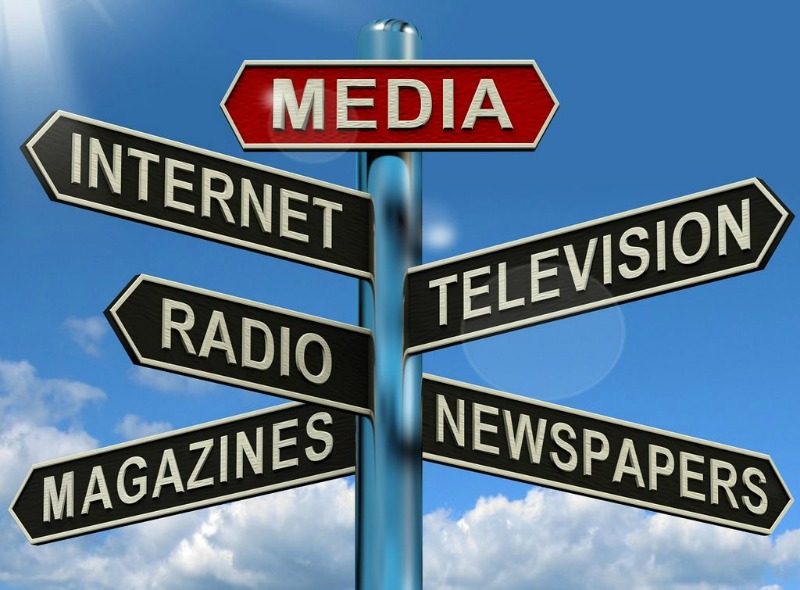Hill+Knowlton Strategies 19 Feb 2015 // 5:15PM GMT

If someone asks you to pick a number, any number, chances are it’ll be seven. Mathematician Alex Bellos even wrote a book about it last year called ‘Alex Through The Looking Glass’, in which he asked 44,000 people to name their favourite number – 10% answered seven.
Colours in the rainbow, the Bible’s most significant number, deadly sins, wonders of the world – I could go on, sevens are everywhere. But apparently, there’s a rational reason for it. Bellos claims the fact that so many people are drawn to the number seven is because they’re subconsciously doing a kind of mental arithmetic. “Of the first 10 numbers, seven is the most prime. You cannot multiply or divide it within the group. It feels unique.”
And because of this, since it makes people think they’re acting like an individual, it’s also something they remember. So if you’re trying to make a point, do it in sevens.
Unruly knows what’s up. After its ‘12 triggers to viral sharing’ back in 2011, the social video company summarised its 2014’s Science of Sharing report in seven key takeaways, highlighting (among other things) that tapping into core human emotions creates content which works.
And I’m going to do the same; give you seven key steps to mapping out your content marketing plan. It won’t make you unique in wanting to ‘do’ content, but it will make sure you plan things in a more considered way. We’ll come back to emotions, but that’s jumping ahead a bit.
Content marketing is, and has been for a few years now, one of the buzzwords of the moment. Ever since Oreo tweeted a fairly basic visual in response to the blackout during the Super Bowl 2013 (getting a HUGE amount of applause from trade press in the process) - brands have been trying to recreate the same effect.
Now, every brand under the sun wants to be a publisher, and because of this, the Internet is cluttered with branded content. Some of it is fantastic, but a large proportion of it is ill planned, lazy and wholly irrelevant to the company in question. I refer back to it often, but a quick look at royallydesperate.tumblr.com proves the point – and that’s just one ‘newsworthy’ event in the calendar.
We’ve thankfully matured to a point beyond this, where the industry itself is now talking about the notion of ‘anticipated’ content. Really, we’ve been doing this for years. For global brands with multiple regional teams, stakeholders and sign-off processes, let alone sector-specific regulation, a big percentage of social content (which, let’s face it, is the focus of so many ‘content marketing’ conversations) isn’t reactive at all. It’s pre-planned, pre-approved, and created weeks in advance. If you’re clever, you can pick up on seasonal trends and ‘moments’ that will be super-relevant to consumers and appear as if you’ve just whipped something up on the same day, but the amount of TRULY responsive content that’s based on live events or news stories, is very small.
Anticipated content allows us to do this same thing - plan in advance - but do it in a smarter way. Rather than just relying on basic 2D images, scenario planning allows us to invest in richer multi-media content. It does mean that there’s some wastage, but when one of those moments occurs, you’ve got something strong, brand-relevant, and engaging to post immediately. We did this at H+K for adidas around the World Cup last year. Plotting out the possible outcomes of games, things players might say or do, and media & consumer response to those things meant that we had a raft of rich content ready to go at the drop of a hat.
Not only are we as an industry getting better at planning ahead, but we’re also getting better at measuring outputs. And not just on a post-level basis, where you consider the performance of content based on engagement or reach and then feed that back into a content calendar, but also real business outcomes.
The social networks are making this easier for us, with better paid options that make it more straightforward to track leads, web traffic and downloads, not to mention really excellent self-serve dashboards to look at analytics. There are truly smart technology businesses like ShareThrough and Outbrain that allow us to put our content in the right places natively, and the last layer are end-to-end analytics platforms like Hubspot that allow us to track the entire journey, and finally start to add robust ROI metrics to the work we do.
Being in charge of ‘Content’ is a strong place to be in these days, as really, it’s just a catchall phrase for creating interesting things that tell a brand’s story. Content can come to life through any channel; offline, online, social, shopper, email, mobile – you name it. While social is the layer being added on top of everything else, content starts from brand purpose – and that’s a much better business to be in.
When it comes to the specifics of great content creation, there’s really not that much of a difference in B2B to B2C communications. Not from a strategic perspective anyway. The touch points are different, sure, but the approach should be the same.
There’s a reason that B2B businesses are now behaving like B2C brands; and that’s because what influences us has changed. Influencers are changing, for many reasons that I could write an entire essay on alone, but essentially, the web gives us access and voice - which means that everyone is an influencer now; from your children to your parents. Because of this, the ‘blurred consumer’ has multiple interests, spheres of influence and various, overlapping networks. Therefore, you can now influence a policymaker in the same way you can an ‘everyday’ consumer. Tactics and channels are changing because of this. And therefore, if you start with the core of what content marketing should do – portray brand purpose – you’ll be far better off than if you start with tactics.
But where are those seven steps I hear you ask? Well, I need to hammer home the point about consideration first before we start mapping out how to approach content marketing.
You can’t get away from content; it’s really just a catchall term for any marketing collateral, in any medium. But the go-to for most marketers when they hear the word ‘content’ is output on social, as video and across digital channels - and to be honest, you really have to look at marketing spend and objectives first to work out if that’s the best place to put your money. But before we even get there, let’s step back a bit;
1. First, work out your brand purpose. Without this, there’s really no point in doing a thing. Unless you have a clearly defined purpose, which outlines in a concise sentence why someone would choose to work/buy with or from you – what hope have you got in cutting through the MOUNTAIN of advertising messages everyone’s getting bombarded with daily? This means getting the right people in the room, and to agree, which is often tough – but absolutely vital.
2. Map your audience; there’s also no point in doing a thing before you know your audience. That means not only looking at current customers, but also profiling potential ones, mapping out their behaviours & demographics, then exploring where they spend their time, their preferences, and what they need. This bit of the puzzle is no longer a ‘nice to have’. You’ve got to base your content on this research & insight. Using ‘gut feel’ is the magic sauce that sets apart good marketers from great ones, but you can’t rely on that alone any more.
3. What are you saying? By doing stages one and two in parallel, you should be able to work out clearly what you’re offering people, and what they want. Then you need to work out how you’re saying it, and what the creative hook or platform is. This is the umbrella that catches people’s attention and gets them excited. It has to be based on a combination of brand, category, human and product truths.
4. What are you focusing on? Consider an annual content calendar of seasonal moments, as well as brand news and sector events. What are you going to plan ahead for and focus on? I love the short interview Monocle’s Tyler Brule did for January’s edition of Contagious, where he says that ‘Brands must learn to edit’. I couldn’t agree more, and this should be your content marketing mantra at all costs. Don’t try to do everything, focus on relevant highlights across the year, and do them really well rather than trying to do absolutely everything.
5. Who are you working with? Here’s a secret that will save you ENDLESS amounts of wasted budget and time; nobody really cares about what you have to say about your own brand. Well, you alone anyway. We all know that customer testimonials have always been the most powerful way to show off how great your brand is, but now the whole internet is one big testimonial, and we’ve moved beyond just collating nice quotes about the great things a business can do. Use the same concept to your advantage, but be smarter about it.
Consider content created for the community, by the community or with your community. Essentially, stuff you create yourself, things you get people to write about you – or the golden egg, co-creation with influencers, where you get people to collaborate on projects, rather than just commissioning them to do stuff for you. This isn’t to be confused with YouTube’s hygiene, hub and hero model. For/by/with is about who you work with; hygiene/hub/hero is about types of content that do different things - very different.
6. Work out your publishing approach. This is where you can, and should, spend time considering which channel is most appropriate. Go to where the fish are. You can only do this once you’ve gone through all the other steps; otherwise you’re just reverse engineering something into a channel that doesn’t make sense. You’ll have started with tactics.
Remember divisible content, and distribute well. If you plan ahead properly, an ATL ad shoot can provide an opportunity to create so much more than just a 30 second spot. If you loop in the right people (and multiple agencies, if appropriate) then you’ll get varied perspectives and more ideas not only on what to create, but where various iterations of that content can live. Make sure you’re making ‘hero’ content work as hard as possible, and that you’re distributing it in the places your potential customers spend their time. Consider paid support in this, as it’s vital to getting things seen. You can create the most beautiful video in the world; but if nobody sees it – you’ve failed.
7. Measure like a beast. And get granular. You need to track performance from an interaction and reach perspective, but also tie back to business objectives. And what’s more, you need to do this within an iterative model that allows for editing as you go – a ‘fail forward’ approach.
Picking up on points 5 and 6. These tactics are, of course, where the differences start to arise. But in terms of creating content that sticks, there are lots of different theories; you'll see a million lists online – all picking up on various attributions.
The core of it all though is creating something that makes someone feel something; typically that's a 'laugh, cry or get goosebumps' type of approach, but it also could be content that makes someone think – or be surprised that they've learned something. Largely, if you can tap into an emotion, you've got it nailed.

Vikki Chowney is director of content and publishing strategies at H+K Strategies UK.
[Main pic credit: mkhmarketing.wordpress.com]


































.jpg)


.png)
.jpg)











